The better an insect can camouflage itself, the higher their chances are for survival. Because of this, adaption and evolution have created some of the most interesting-looking insects in the world. While some have evolved to look like sticks and leaves, others have evolved to look like plants and petals. Even for experts, it may be difficult to spot one out in the wild. Today, we’ll discuss ten of the most intriguing insects that have evolved to look like leaves.
Why Do Insects Look Like Leaves?
You may be wondering how exactly insects have evolved to look identical to vegetation. The answer is simple: the more believable their camouflage is, the less of a chance there is that they will be predated. Moths, butterflies, and other small insects are usually helpless against larger predators like birds, bats, and small rodents. Because they won’t be able to “fight back,” the best chance they have to survive will be to go unseen. Other insects have created different solutions to this problem, such as the toxic monarch butterfly. The monarch caterpillars feed on poisonous milkweed, making them indigestible if eaten. Predators know this and steer clear of them for this reason. However, if you can’t make yourself virulent, you’ll need to come up with another solution. For many, that solution is mimicry.
1. Giant Malaysian Leaf Insect
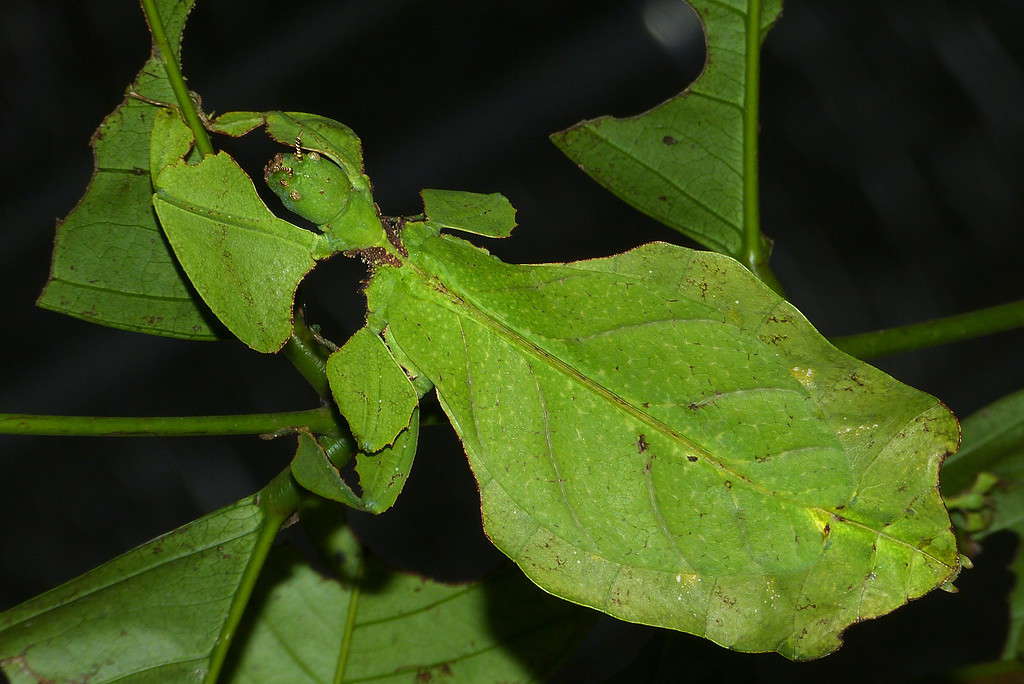
The average lifespan of a Giant Malaysian Leaf Insect is roughly one year.
©Bernard DUPONT from FRANCE / CC BY-SA 2.0 – License
What better poster child is there for insects that look like leaves? The Giant Malaysian Leaf Insect is one of the most iconic mimics of all time. Its body appears to be a curling, browning leaf while its legs appear to be broken leaf segments. As it says in their name, these insects are common all throughout the tropics of Malaysia, preferring to live in warm humid areas.
Birds enjoy snacking on the Giant Malaysian Leaf Insect. When these insects sense one nearby, they become incredibly still in an attempt to blend in with their surroundings. Often, this strategy proves successful due to their remarkable likeness to leaflitter.
2. Katydid

There are roughly 8,000 known species of katydids.
©Bernard DUPONT from FRANCE / CC BY-SA 2.0 – License
When people think of insects that look like leaves, chances are they’re picturing a katydid. Also known as long-horned grasshoppers or bush crickets, these insects are found on every continent in the world excluding Antarctica. Katydids mimic both the appearance and the behavior of leaves. If one senses a predator nearby, they begin slightly fluttering their bodies to appear like a leaf blowing in the wind. This helps them blend into their environment even more successfully, and many animals are fooled by this impressive technique.
3. Moss Mimic Stick Insect
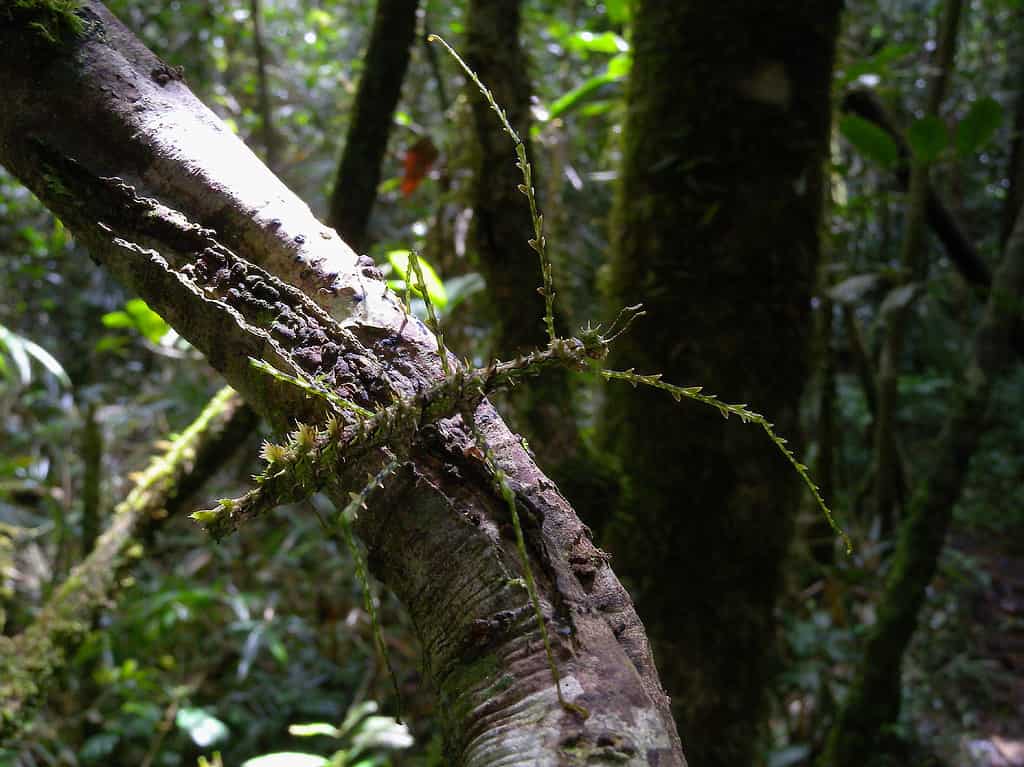
The diet of the moss mimic
stick insect
consists of bramble, oak, and raspberry leaves.
©Frank Vassen from Brussels, Belgium / CC BY 2.0 – License
“Stick insects” is an umbrella term for a number of insects that are a part of the order Phasmatodea. This order is comprised of a variety of insects that all appear incredibly similar to sticks and leaves, or some combination of the two. The moss mimic stick insect bears an incredible resemblance to a stick covered in mossy vegetation and blends into any lush environment with ease. This insect can be found in Costa Rica, Panama, Colombia, and Nicaragua.
4. Orange Oakleaf Butterfly
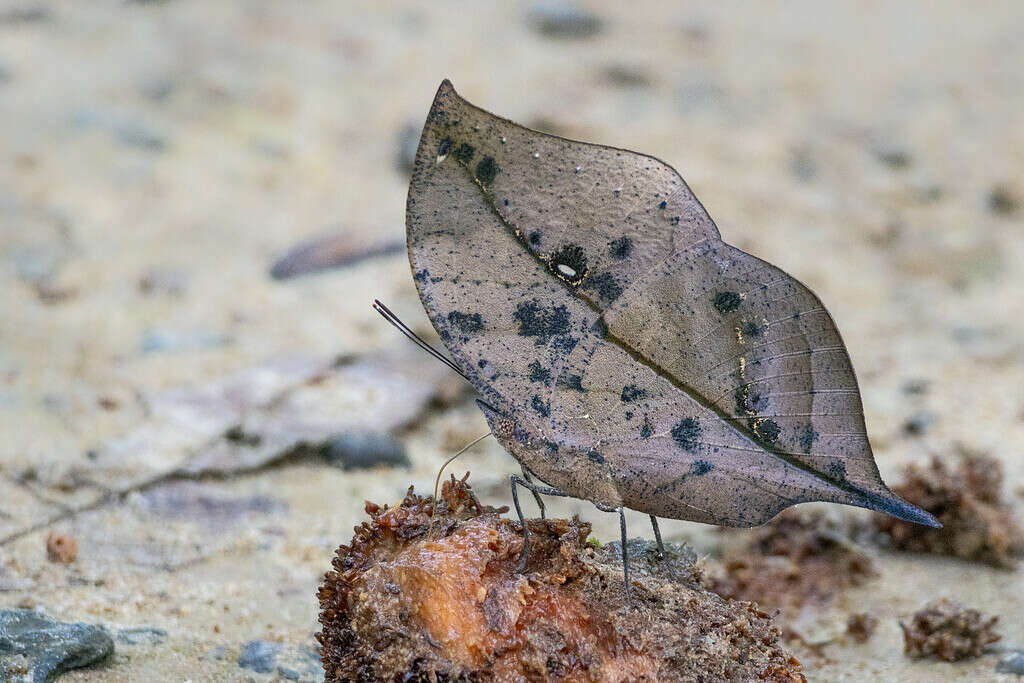
The wingspan of an orange oakleaf butterfly can range from three to nearly four and a half inches.
©Anitava Roy / CC BY-SA 4.0 – License
When this beautiful blue and gold butterfly closes its wings, you may not be able to tell where it went! Unlike some of our other entries, the orange oakleaf mimics a dead leaf instead of a vibrant, green leaf. This butterfly is found across many countries, such as Myanmar, China, India, Japan, Thailand, and many more. It is predated by birds, spiders, and other insects. However, this little butterfly has more than one line of defense. In addition to its camouflage, it’s an incredibly strong flier and capable of incredible defensive maneuvers when threatened.
5. Dead Leaf Grasshopper
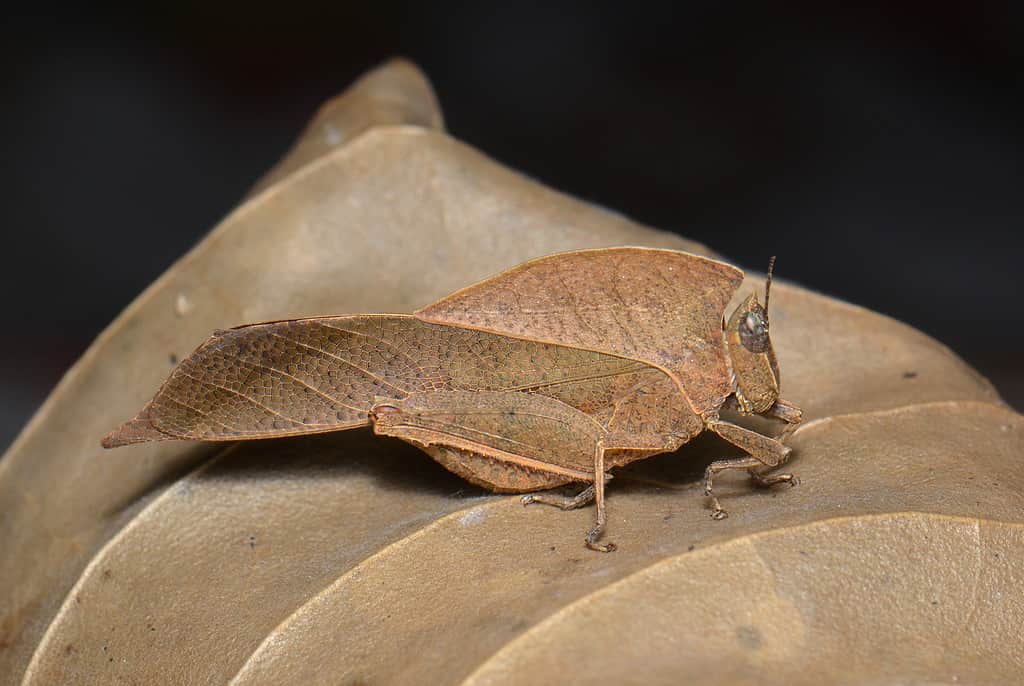
Dead leaf grasshoppers are entirely herbivorous.
©Pavel Kirillov from St.Petersburg, Russia / CC BY-SA 2.0 – License
If the intricacy of camouflage was a competition, then the dead leaf grasshopper would take home the grand prize. While much less complex mimicry would likely yield the same results, the attention to detail present in the dead leaf grasshopper’s appearance is truly impressive. The sides of the dead leaf grasshopper’s body resemble two curled-up, dead leaves with visible veins present. If this insect was standing among a pile of leaf litter, distinguishing it would be nearly impossible even for a seasoned entomologist. The leaf grasshopper can be found in India, Malesia, and Indochina.
6. Leafhopper
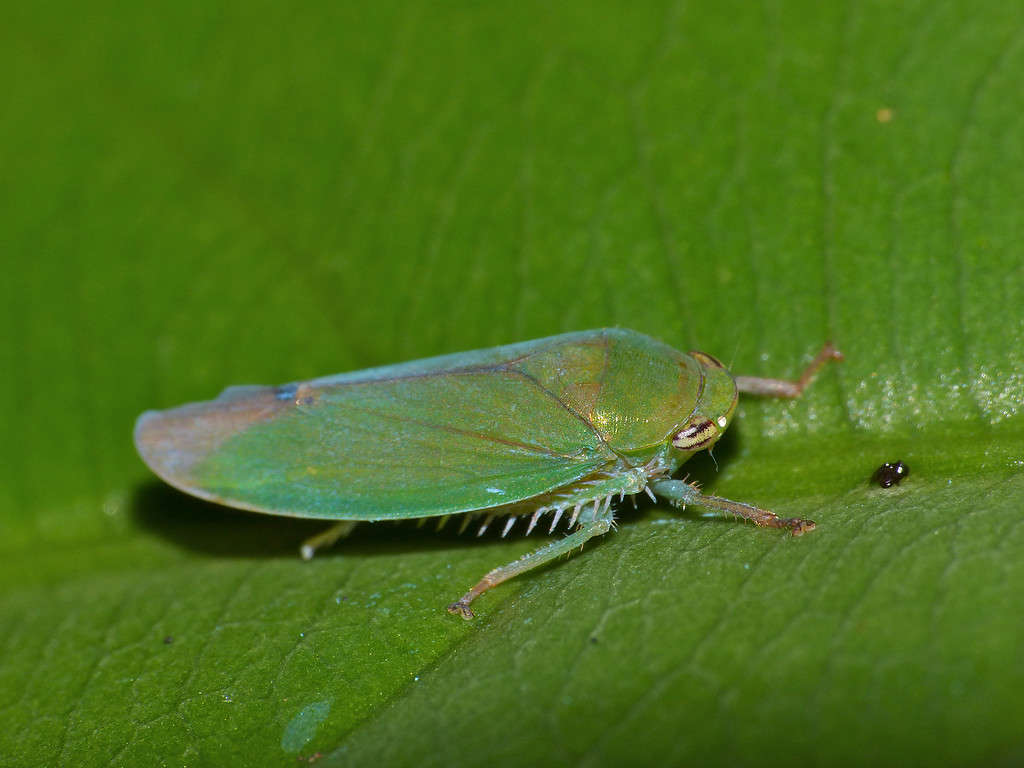
Leafhoppers are considered harmful to vegetable gardens.
©Bernard DUPONT from FRANCE / CC BY-SA 2.0 – License
In addition to their camouflage, leafhoppers are microscopic when compared to other insects on this list. Leafhoppers can be found on nearly every continent in the world where plant life is present, which means they are a common food source for many animals. Birds, reptiles, and other insects all include leafhoppers as part of their diet. However, their small size, leaf-life appearance, and ability to jump dozens of times their body length make them one of the most elusive leaf mimics on this list.
7. Thorny Devil Stick Insect
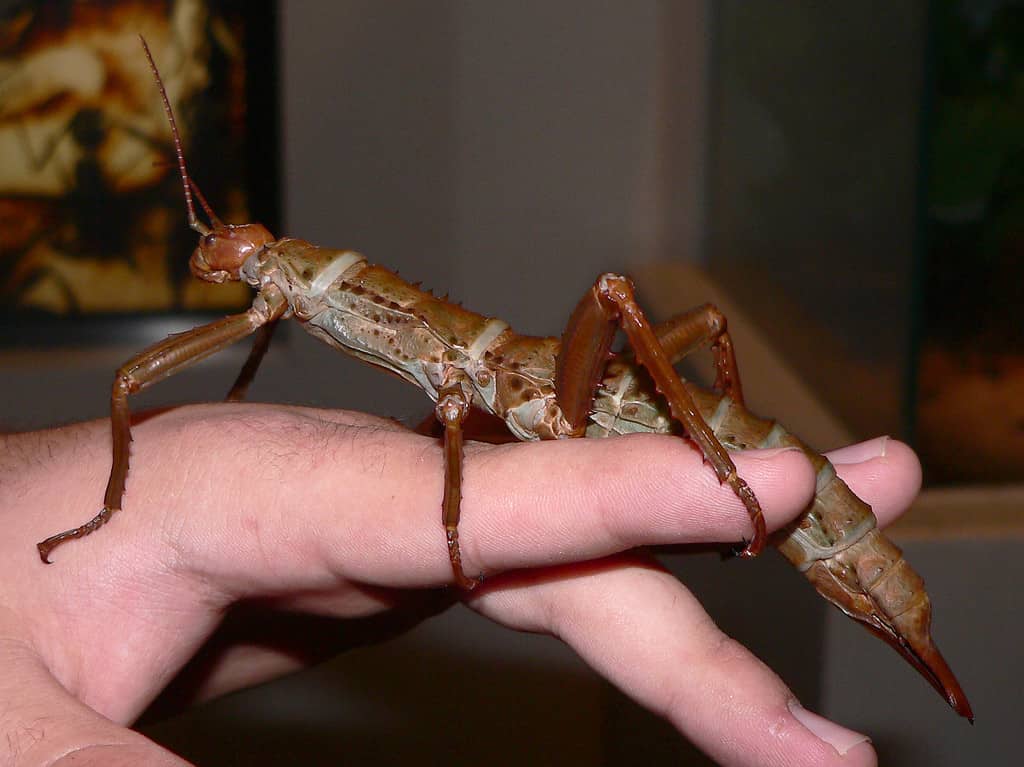
The spines on the
thorny devil
stick insect provide it with increased protection from predators.
©Greg Hume / CC BY-SA 3.0 – License
This insect is a combination of many forms of mimicry we’ve discussed so far. The thorny devil insect appears to be a cross between a piece of bark, dead branches, thorns, and leaf litter. This gives them the ability to blend into many different environments and go undetected. These insects are native to Australasia. Due to their unique camouflage and large size, you may think that not many animals would be willing to eat these insects. However, the thorny devil is highly favored by bats. Bats rely on echolocation rather than sight, so they aren’t duped by the thorny devil’s impressive mimicry.
8. Dead-Leaf Moth
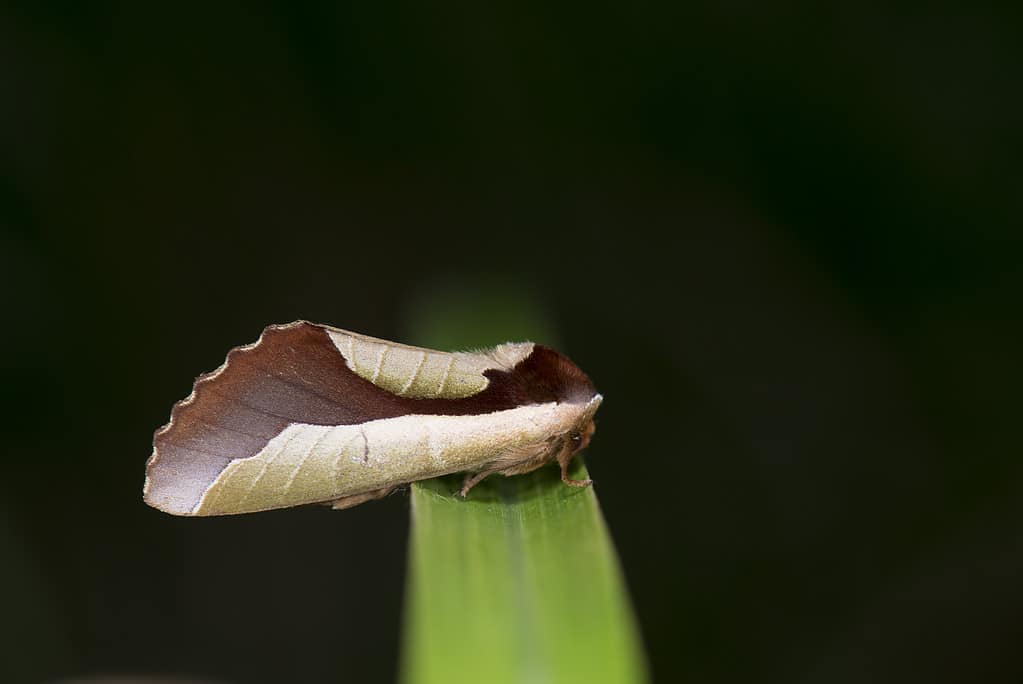
was first described in the 1800s.
©LiCheng Shih / CC BY 2.0 – License
The dead leaf moth, or Uropyia meticulodina, is one of the most stunning displays of evolution that this planet has to offer. While at rest, the closed wings of this moth appear to be a dead, curled-up leaf. This mimicry is so successful that professionals report difficulty finding these moths in their natural habitat. When these moths sense that danger is nearby, they become very still and silent. This is usually enough to fool their predators, who pass over them quite routinely. These moths are native to Taiwan and China.
9. Giant Prickly Stick Insect
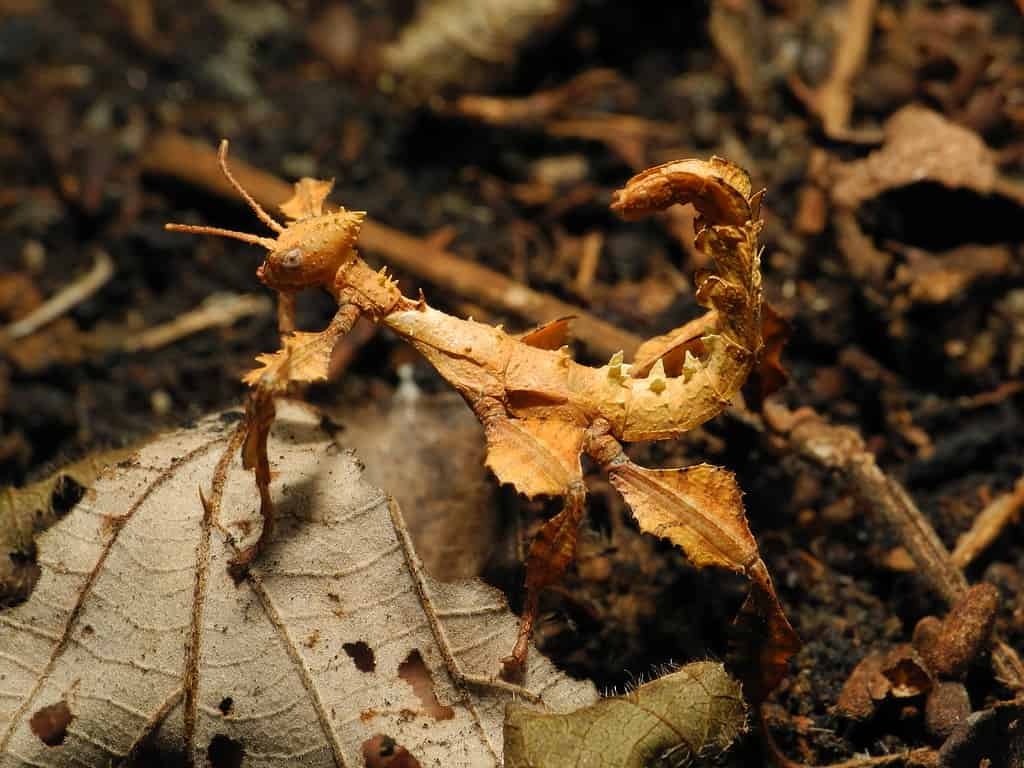
Giant prickly stick insects are also sometimes called “Australian walking sticks.”
©Thomas Bresson / CC BY 3.0 – License
Commonly known as “Macleay’s spectre,” this dead leaf mimic is native to New Guinea and Australia. These stick insects sway back and forth when they feel threatened, attempting to appear as if they are a wind-swept leaf. The giant prickly stick insect has captured the hearts of many people, with some enthusiasts calling their appearance and mannerisms “adorable.” Whether you love them or hate them, it’s hard not to be impressed by them!
10. Honorable Mention: Orchid Mantis
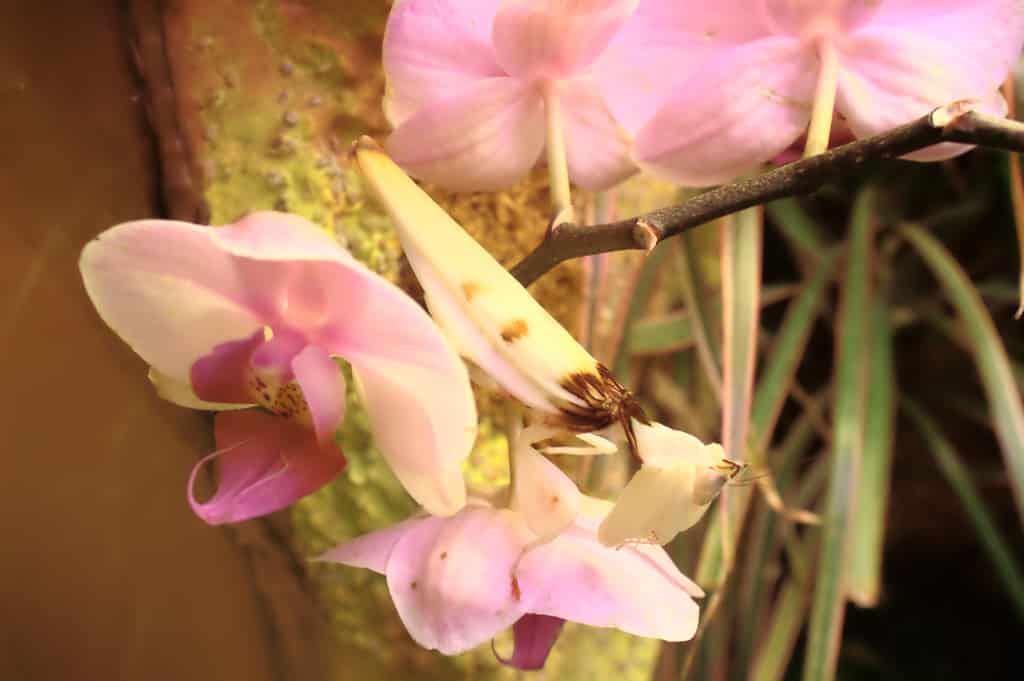
Female orchid mantises are nearly twice as big as males.
©Philipp Psurek / CC BY-SA 3.0 DE – License
While these insects may not look like leaves per se, they have adapted to look like flowers. Equally beautiful as they are impressive, the orchid mantis is native to Southeast Asia. Unlike other entries on this list, these insects use what is called “aggressive mimicry.” Aggressive mimicry differs from normal mimicry because its sole purpose is not to camouflage the user but to attract prey as well. Orchid mantises will sit among a bed of flowers, waiting for smaller insects to come close to them. Before the prey insect is able to tell that a mantis is hiding among the orchids, it’s often too late.
| Where They Are Found | Insect |
|---|---|
| Giant Malaysian Leaf Insect | Malaysia |
| Katydid | Every continent excluding Antartica |
| Moss Mimic Stick Insect | Costa Rica, Panama, Colombia, and Nicaragua. |
| Orange Oakleaf Butterfly | Every continent excluding Antarctica |
| Dead Leaf Grasshopper | India, Malesia and Indochina |
| Leafhopper | Every continent excluding Antarctica |
| Thorny Devil Stick Insect | Australasia |
| Dead-Leaf Moth | Taiwan and China |
| Giant Prickly Stick Insect | New Guniea and Australia |
| New Guinea and Australia | All across Southeast Asia |
The photo featured at the top of this post is © LiCheng Shih / CC BY 2.0 – License / Original
Thank you for reading! Have some feedback for us? Contact the AZ Animals editorial team.






